Cagan Laboratory- Our Research
Biology of Therapeutics
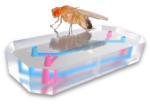
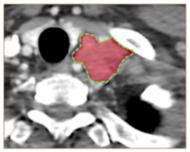 In our journey to understand the biology of therapeutics, we are exploring two categories of disease: cancer [thyroid, colorectal, breast, lung] and Mendelian (inherited) diseases [primarily RASopathies]. We use flies and mammalian models (cell lines, mouse xenografts, organoids) to explore therapeutic mechanisms, to develop new lead compounds, and to execute a fly-to-bedside clinical trial in which we treat cancer patients and further refine our understanding of clinical needs.
In our journey to understand the biology of therapeutics, we are exploring two categories of disease: cancer [thyroid, colorectal, breast, lung] and Mendelian (inherited) diseases [primarily RASopathies]. We use flies and mammalian models (cell lines, mouse xenografts, organoids) to explore therapeutic mechanisms, to develop new lead compounds, and to execute a fly-to-bedside clinical trial in which we treat cancer patients and further refine our understanding of clinical needs.
Please explore our website to see our innovative approaches to therapeutics and meet the researchers working to help better patients' lives. (Right: scan from colorectal cancer patient treated with a bespoke drug cocktail derived from their 'personalised fly avatar')
Disease models and novel lead therapeutics
Cancer
The primary focus of our laboratory is cancer. We contribute to the cancer field in two broad ways. First, we build highly complex Drosophila models designed to capture the genomic complexity of individual human colorectal, thyroid, lung, and breast cancer patients. These ‘fly avatars’ allow us to explore how altering 5-15 genes in a single transgenic animal alters tumor progression and drug response.
Our second approach is drug development. Working with our close collaborators Arvin Dar, Avner Schlessinger, and their teams, we have developed a novel platform—combining fly genetics with medicinal and computational chemistry—to develop lead compounds that attack the cancer network in the context of the whole animal. These ‘Tumor Calibrated Inhibitors’ represent a new way towards addressing drug liabilities including resistance and toxicity.
Cancer Models
Our laboratory uses fly models to explore the biology of cancer therapeutics. We have built dozens of complex fly lines—up to 14 hit models—for thyroid, colorectal, lung, salivary gland, and breast cancers; we use these as the start of an integrated approach towards therapeutics. Our efforts include personalised fly avatars, a fly-to bedside clinical trial, and chemical evolution to develop lead therapeutic compounds. All of these efforts are informed by our ability to make many models for each disease, moving away from understanding a single model towards embracing patient complexity and heterogeneity, two key challenges in the clinic.
Colorectal cancer models: Erdem, Sindhura, Tirtha, Delon, Dan
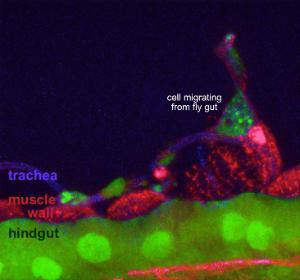 Targeting transgenes to the adult hindgut (e.g., byn>RAS[G12V]-P53[RNAi]-APC[RNAi]-PTEN[RNAi]) recapitulated several key aspects of tumorigenesis including multilayering, hyperproliferation, evasion of apoptosis and senescence, SRC/MMP-dependent epithelial-to- mesenchymal transition (EMT), and metastasis-like migration of hindgut cells out of the epithelium to colonize distant sites within the body, recapitulating key aspects of metastasis (Figure). Using these models, we found that increased genetic complexity led to increased drug resistance that required drug combinations, a finding we validated in mouse xenograft models and, more recently, in a patient as part of the CPCT.
Targeting transgenes to the adult hindgut (e.g., byn>RAS[G12V]-P53[RNAi]-APC[RNAi]-PTEN[RNAi]) recapitulated several key aspects of tumorigenesis including multilayering, hyperproliferation, evasion of apoptosis and senescence, SRC/MMP-dependent epithelial-to- mesenchymal transition (EMT), and metastasis-like migration of hindgut cells out of the epithelium to colonize distant sites within the body, recapitulating key aspects of metastasis (Figure). Using these models, we found that increased genetic complexity led to increased drug resistance that required drug combinations, a finding we validated in mouse xenograft models and, more recently, in a patient as part of the CPCT.
To enter the next phase of our studies, we recently built a collection of dozens of colorectal cancer ‘fly avatars’ to more deeply explore how to address genetic complexity in a whole animal context. Lines typically target 6-16 genes specifically in the fly hindgut. This avatar collection will provide a unique opportunity to explore disease and to develop next generation therapeutics that are matched to patient biomarkers.
We are also using these complex avatar lines to explore aspects of cell competition and clone dynamics in the fly epithelium, to better understand the impact of genetic complexity on the ability of local epithelial signaling to controlling an emerging tumour.
Figure: A RAS-APC-P53-PTEN cell leaving the hindgut.
Thyroid and other RET-based cancer models: Renee, Marcos, Tirtha, Sara, Masa
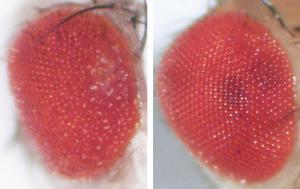 Our laboratory has studied Medullary Thyroid Cancer for more than a decade. MTC is a rare, RET-driven cancer with a high metastasis and mortality rate. Using a fly RET MTC model, we characterized the RET cancer network through broad genetic screens. Through drug screening, we used our RET fly model to help identify/validate vandetanib as the first standard-of-care therapeutic for MTC; vandetinib was subsequently approved in 2011. More recently, we have used fly models to explore RET fusions including CCDC6-RET, NCOA4-RET, and KIF5B-RET, the latter linked primarily to lung cancers. Our fly lines demonstrated clear differences in the biology of transformation and in drug responses for each of the fusions, data that we subsequently validated in cell line models.
Our laboratory has studied Medullary Thyroid Cancer for more than a decade. MTC is a rare, RET-driven cancer with a high metastasis and mortality rate. Using a fly RET MTC model, we characterized the RET cancer network through broad genetic screens. Through drug screening, we used our RET fly model to help identify/validate vandetanib as the first standard-of-care therapeutic for MTC; vandetinib was subsequently approved in 2011. More recently, we have used fly models to explore RET fusions including CCDC6-RET, NCOA4-RET, and KIF5B-RET, the latter linked primarily to lung cancers. Our fly lines demonstrated clear differences in the biology of transformation and in drug responses for each of the fusions, data that we subsequently validated in cell line models.
Figure: Expressing oncogenic RET in the fly eye led to a ‘rough eye’phenotype that was rescued by APS6-45.
Adenoid cystic carcinoma Shree
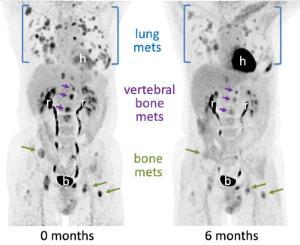 Adenoid cystic carcinoma is a cancer of the salivary glands. Slow-growing but relentless, there are currently no treatments approved for ACC. As part of our fly-to-bedside clinical trial, we reported an interesting drug combination that showed marked efficacy in a patient with advanced ACC disease. Shree is now building new ACC fly avatars to explore this and other candidate therapies.
Adenoid cystic carcinoma is a cancer of the salivary glands. Slow-growing but relentless, there are currently no treatments approved for ACC. As part of our fly-to-bedside clinical trial, we reported an interesting drug combination that showed marked efficacy in a patient with advanced ACC disease. Shree is now building new ACC fly avatars to explore this and other candidate therapies.
Figure: CT scan from a patient treated with a novel 3-drug cocktail, identified by screening a personalised fly avatar'
Mouse and human organoids Teena, Bojie
Building on our Drosophila work, we are working with Owen Sansom and his group to use intestinal organoids as a mammalian tool to explore colon tumours. We are testing concepts of epithelial dynamics and drug response in a variety of different genetic backrounds.
References
- Vidal, M., Larson, D. Read, R., and Cagan, R. (2006). Csk-deficient boundary cells are eliminated from normal Drosophila epithelia by exclusion, migration, and apoptosis. Developmental Cell, 10(1):33-44.
- Vidal, M., Salavaggione, L., Ylagan, L., Wilkins, M., Watson, M., Weilbaecher, K., Cagan, R. (2010). A Role for the Epithelial Microenvironment at Tumor Boundaries: Evidence from Drosophila and Human Squamous Cell Carcinomas. Am J Pathol. 176(6):3007-14. PMC2877860
- Das TK, Sangodkar J, Negre N, Narla G, and Cagan, R. (2012). Sin3a Acts through a Multi-Gene Module to Regulate Invasion in Drosophila and Human Tumors. Oncogene onc.2012.326. PMC3696049
- Hirabayashi S. and Cagan R. (2015). Salt-inducible kinases mediate nutrient-sensing to link dietary sugar and tumorigenesis in Drosophila. eLife, doi: 10.7554/eLife.08501. PMC4643014
- Bangi E., Murgia C., Teague A., Sansom O., and Cagan R. (2016). Functional exploration of colorectal cancer genomes using Drosophila. Nature Communications, doi: 10.1038/ncomms13615. PMC5141297
- Das T, Cagan R (2017). KIF5B-RET Oncoprotein Signals Through a Multi-Kinase Signaling Hub. Cell Reports doi: 10.1016/j.celrep.2017.08.037
- Das TK, Esernio J, Cagan R. (2018). Restraining Network Response to Targeted Cancer Therapies Improves Efficacy and Reduces Cellular Resistance. Cancer Res. doi: 10.1158/0008-5472.CAN-17-2001.
- Bangi E, Ang C, Smibert P, Uzilov A, Teague A, Antipin Y, Chen R, Hecht C, Gruszczynski N, Yon W, Malyshev D, Laspina D, Selkridge I, Rainey H, Moe A, Lau CY, Taik P, Wilck E, Bhardwaj A, Sung M, Kim S, Yum K, Sebra R, Donovan M, Misiukiewicz K, Schadt E, Posner M, and Cagan R. (2019). A Personalized Platform Identifies Trametinib Plus Zoledronate For A Patient With KRAS-Mutant Metastatic Colorectal Cancer. Science Advances doi: 10.1126/sciadv.aav6528
- Erdem Bangi, Peter Smibert, Andrew V. Uzilov, Alexander G. Teague, Sindhura Gopinath,Yevgeniy Antipin, Rong Chen, Chana Hecht, Nelson Gruszczynski, Wesley J. Yon, Denis Malyshev,Denise Laspina, Isaiah Selkridge, Huan Wang, Jorge Gomez, John Mascarenhas, Aye S. Moe, Chun Yee Lau, Patricia Taik, Chetanya Pandya, Max Sung, Sara Kim, Kendra Yum, Robert Sebra, Michael Donovan, Krzysztof Misiukiewicz, Celina Ang, Eric E. Schadt, Marshall R. Posner, and Ross L. Cagan (2021). A Drosophila platform identifies a novel, personalized therapy for a patient with adenoid cystic carcinoma. iScience 2021 Feb 20;24(3):102212. doi: 10.1016/j.isci.2021.102212.
Fly RASopathy models
Fly RASopathy models: Jared, Tirtha in collaboration with Bruce Gelb and colleagues
The RASopathies are a collection of inherited disorders that are characterized by mutations that elevate activity of the RAS/ERK signaling network. Patients present with a broad palette of developmental defects as well as those that emerge postnatally. In addition to reducing quality of life, most patients with these traits encounter some RASopathy-associated morbidities such as hypertrophic cardiomyopathy (HCM), which can be life-threatening. Currently, only symptomatic care is available for affected individuals.
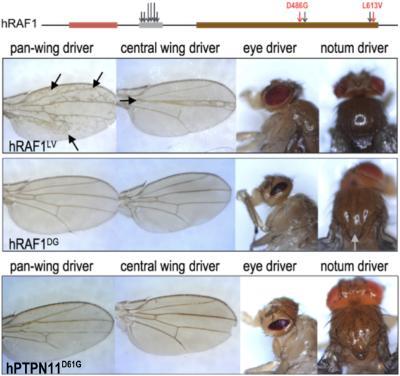 Models: To address this continuing unmet need, we are collaborating with the Gelb laboratory to identify new lead therapeutics through a novel approach: using Drosophila RASopathy models as whole animal screening platforms. We generated 14 new RASopathy models by expressing human disease isoforms of KRAS, RAF1, BRAF, and PTPN11 in flies: the result is a series of phenotypes that related to altered RAS pathway activity. We found that different disease isoforms can show significantly different phenotypes (Figure). In addition, different mutations can act both cell autonomously and—in some cases—non-autonomously to affect RAS signaling at a distance.
Models: To address this continuing unmet need, we are collaborating with the Gelb laboratory to identify new lead therapeutics through a novel approach: using Drosophila RASopathy models as whole animal screening platforms. We generated 14 new RASopathy models by expressing human disease isoforms of KRAS, RAF1, BRAF, and PTPN11 in flies: the result is a series of phenotypes that related to altered RAS pathway activity. We found that different disease isoforms can show significantly different phenotypes (Figure). In addition, different mutations can act both cell autonomously and—in some cases—non-autonomously to affect RAS signaling at a distance.
Figure: Different RASopathy mutations direct different defects. Top: Expressing hRAF1[L613V] led to ectopic wing vein material (arrows) but mostly normal eye, notum. Mutations sites are shown above. Middle: Expressing a different allele, hRAF1[D486G], led to normal wings, abnormal eye, & split thorax (arrow). Bottom: PTPN11[D61G] only affected the eye.
Drug discovery and development: Taking advantage of our set of fly RASopathy models, we have embarked on an extensive drug development effort using a rescue-from-lethality assay. Screening ~80 FDA approved drugs led to several candidate therapeutics including RAS pathway inhibitors but also drugs that act more broadly. We are especially interested in broadly acting compounds and drugs that can capture a broad cross-section of patients in clinical trials.
Screening a library of 14,400 novel compounds, we are working to develop a new chemical entity tuned to act broadly on RASopathies. We are currently focusing on evolving a compound in novel chemical space that shows exceptional activity across multiple RASopathy models.
Collaboration: In addition to being partners on the fly side, the Gelb lab is assessing the most promising of these therapeutic candidates in iPSC-derived cardiomyocytes; HCM represents a measurable parameter for future clinical trials. Together, this represents one of the most extensive RASopathy therapeutic efforts to date.
Our first RASopathy publication
Tirtha K. Das, Jared Gatto, Rupa Mirmira, Ethan Hourizadeh, Dalia Kaufman, Bruce D. Gelb, and Ross Cagan (2021). Drosophila RASopathy Models Identify Disease Subtype Differences and Biomarkers of Drug Efficacy. iScience, doi: 10.1016/j.isci.2021.102306
Drug Discovery
A novel fly/chemistry platform: Tirtha, Masa in collaboration with Arvin Dar, Avner Schlessinger, Alex Scopton, and Peter Ung
To develop new therapeutic leads that improve on vandetanib for MTC—a similarly rare and deadly disease that is inherited in 25% of patients—we used a fly model to identify the FDA approved drug sorafenib as showing moderate efficacy. We then used a new platform developed by the Dar and Cagan laboratories to create sorafenib analogs (‘sorafelogs’) that (i) show excellent preclinical efficacy while (ii) retaining the druggable properties of sorafenib.
A key effort in the laboratory is developing new generation lead therapeutic compounds. Our initial focus is on cancer, where we are working with Arvin Dar and Avner Schlessinger and their teams to develop a novel fly/chemistry drug development platform.
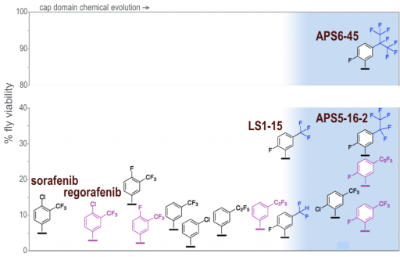 Example- sorafenib analogs: To identify a kinase inhibitor as a starting point for RET-dependent Medullary Thyroid Carcinoma (MTC), we began by screening most FDA approved kinase inhibitors for rescue of a RET[M955T] fly cancer model: sorafenib improved survival to adulthood from 0% to 5%. We then used genetic screening of the fly kinome to identify ‘pro-targets’ (new targets that would improve sorafenib therapeutic index) and ‘anti-targets’ (sorafenib targets that are liabilities, either by reducing activity in the tumor or promoting whole body toxicity).
Example- sorafenib analogs: To identify a kinase inhibitor as a starting point for RET-dependent Medullary Thyroid Carcinoma (MTC), we began by screening most FDA approved kinase inhibitors for rescue of a RET[M955T] fly cancer model: sorafenib improved survival to adulthood from 0% to 5%. We then used genetic screening of the fly kinome to identify ‘pro-targets’ (new targets that would improve sorafenib therapeutic index) and ‘anti-targets’ (sorafenib targets that are liabilities, either by reducing activity in the tumor or promoting whole body toxicity).
Computational modeling and chemical evolution studies were then used to add pro-targets and remove anti-targets from sorafenib’s cap structure. For example, removing the anti-target MKNK1 from sorafenib led to reduced whole body sorafenib toxicity. The eventual result was a new set of sorafenib analogs that showed improved efficacy in fly and mouse xenograft models (Figure); our initial mammalian ADME studies indicate that these ‘Tissue Calibrated Inhibitors’ (TCIs) retained many or most of the drug-like properties of sorafenib. Importantly, we moved these sorafelogs into novel chemical space, permitting us to file for the patent protection required to bring them into clinical trials. We are currently working to move APS6-45 sister compounds through IND-enabling studies.
Figure: Summary of chemical evolution from sorafenib (5% fly viability rescue) to APS6-45 (85% rescue).
Next steps: We are currently focused on advancing our platform to other diseases including other cancers (liver, lung) and inherited diseases (mostly RASopathies). This platform develops leads that are different than most other leads: these 'network-based' compounds are tuned to the whole body and can act anywhere including multiple points along the body and along the cancer network.
References
- Vidal, M., Wells, S., Ryan, A., and Cagan, R. (2005). ZD6474 suppresses oncogenic Ret isoforms in a Drosophila model for Type 2 Multiple Endocrine Neoplasia Syndromes and Papillary Thyroid Carcinoma. Cancer Research 65(9), 3538-41. PMC5867345
- *Dar AC, *Das T, Shokat KM, and Cagan R. (2012). Chemical Genetic Discovery of Targets and Anti-targets for Polypharmacological Treatment of Cancer. Nature 486(7401):80-4. *Co-first author.
- Levine B and Cagan R. Drosophila Lung Cancer Models Identify Trametinib Plus A Statin as a Candidate Therapeutic (2016). Cell Reports, doi: 10.1016/j.celrep.2015.12.105. PMC4904304
- *Sonoshita, M., *Scopton, A., Ung, P., Murray, M., Silber, L., Maldonado, A., Real, A., Schlessinger, A., **Cagan, R., **Dar, A. (2017). A Whole Animal Platform to Advance A Clinical Kinase Inhibitor Into New Disease Space. Nature Chem Biol 2018 Mar;14(3):291-298. *Co-first author; **co-corresponding.
- Zhaoping Xiong*, Minji Jeon*, Robert J Allaway*, Jaewoo Kang, Donghyeon Park, Jinhyuk Lee, Hwisang Jeon, Miyoung Ko, Hualiang Jiang, Minyue Zheng, Aik Choon Tan, Xindi Guo, The Multi-Targeting Drug DREAM Challenge Community, Kristen K Dang, Alex Tropsha, Chana Hecht, Tirtha K. Das, Heather A. Carlson, Ruben Abagyan, Justin Guinney, Avner Schlessinger§, Ross Cagan§ *co-first authors §corresponding authors (2021). Crowdsourced identification of multi-target kinase inhibitors for RET- and TAU- based disease: the Multi-Targeting Drug DREAM Challenge. PLOS Comp Biol in press.
Fly-To-Bedside Clinical Trial
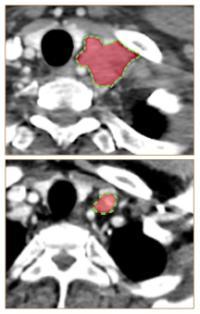 Clinical Trial: Erdem Bangi, Peter Smibert, Andrew V. Uzilov, Alexander G. Teague, Sindhura Gopinath, Yevgeniy Antipin, Rong Chen, Chana Hecht, Nelson Gruszczynski, Wesley J. Yon, Denis Malyshev, Denise Laspina, Isaiah Selkridge, Huan Wang, Jorge Gomez, John Mascarenhas, Aye S. Moe, Chun Yee Lau, Patricia Taik, Chetanya Pandya, Max Sung, Sara Kim, Kendra Yum, Robert Sebra, Michael Donovan, Krzysztof Misiukiewicz, Celina Ang, Eric E. Schadt, Marshall R. Posner, and Ross L. Cagan
Clinical Trial: Erdem Bangi, Peter Smibert, Andrew V. Uzilov, Alexander G. Teague, Sindhura Gopinath, Yevgeniy Antipin, Rong Chen, Chana Hecht, Nelson Gruszczynski, Wesley J. Yon, Denis Malyshev, Denise Laspina, Isaiah Selkridge, Huan Wang, Jorge Gomez, John Mascarenhas, Aye S. Moe, Chun Yee Lau, Patricia Taik, Chetanya Pandya, Max Sung, Sara Kim, Kendra Yum, Robert Sebra, Michael Donovan, Krzysztof Misiukiewicz, Celina Ang, Eric E. Schadt, Marshall R. Posner, and Ross L. Cagan
Based on the work from many laboratories including our own, we are testing the concept that drug response predictions would be improved in a real world setting if genomic complexity were more completely captured in a whole animal setting. We develop and robotically screen patient-bespoke 'fly avatars' to identify personalised drug cocktails. We have recently published our first fly-to-bedside patient reports (Bangi et al, 2019; Bangi et al, 2021).

